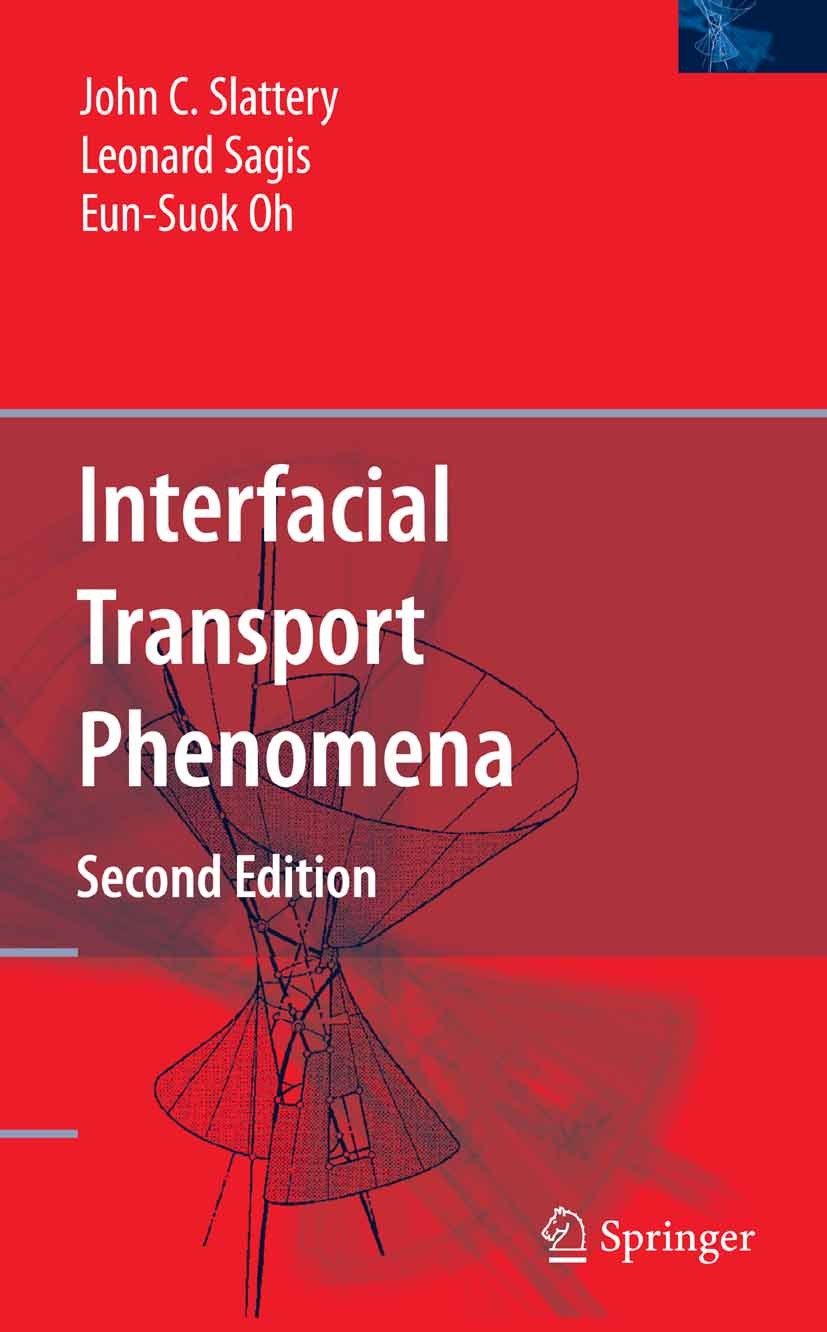| 书目名称 | Interfacial Transport Phenomena | | 编辑 | John C. Slattery,Leonard Sagis,Eun-Suok Oh | | 视频video | http://file.papertrans.cn/471/470963/470963.mp4 | | 概述 | Revised and updated extensively from the previous edition.Discusses transport phenomena at common lines or three-phase lines of contact.Provides a comprehensive summary about the extensions of continu | | 图书封面 |  | | 描述 | Transport phenomena is used here to describe momentuin, energy, mass, and entropy transfer [1, 2]. It includes thermodynamics, a special case of which is thermosiaiics. Interfacial transport phenomena refers to momentum, energy, mass, and entropy transfer within the immediate neighborhood of a phase interface, including the thermodynamics of the interface. In terms of qualitative physical observations, this is a very old field. Pliny the Elder (Gains Plinius Secundus, 23-79 A. D. ; Pliny [3]) described divers who released small quantities of oil from their mouths, in order to damp capillary ripples on the ocean surface and in this way provide more uniform lighting for their work. Similar stories were retold by Benjamin Franklin, who conducted experiments of his own in England [4]. In terms of analysis, this is a generally young field. Surface thermostat ics developed relatively early, starting with Gibbs [5] and continuing with important contributions by many others (see Chap. 4). Derjaguin and Lan dau [6] and Verwey and Overbeek [7] indicated how London-van der Waals and electrostatic double-layer forces were to be incorporated in continuum mechanics, now often referred to as DL | | 出版日期 | Book 20072nd edition | | 关键词 | Helium-Atom-Streuung; continuum mechanics; design; kinematics; mechanics | | 版次 | 2 | | doi | https://doi.org/10.1007/978-0-387-38442-9 | | isbn_softcover | 978-1-4899-7874-5 | | isbn_ebook | 978-0-387-38442-9 | | copyright | Springer-Verlag US 2007 |
The information of publication is updating

|
|
 |Archiver|手机版|小黑屋|
派博传思国际
( 京公网安备110108008328)
GMT+8, 2025-11-20 13:47
|Archiver|手机版|小黑屋|
派博传思国际
( 京公网安备110108008328)
GMT+8, 2025-11-20 13:47


